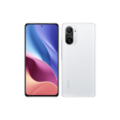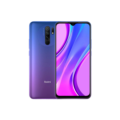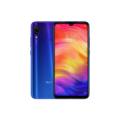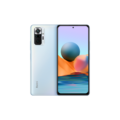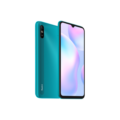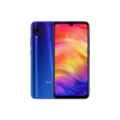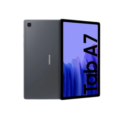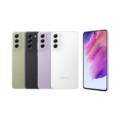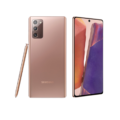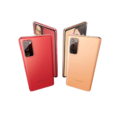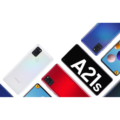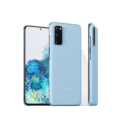Redmi Note 8 Harga Malaysia
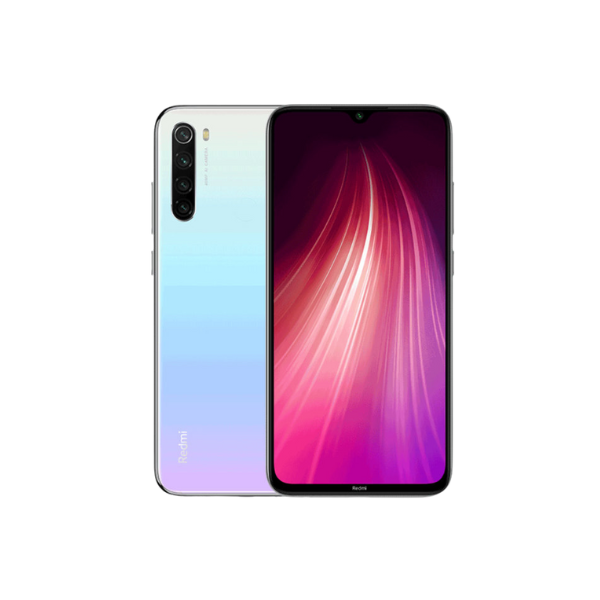

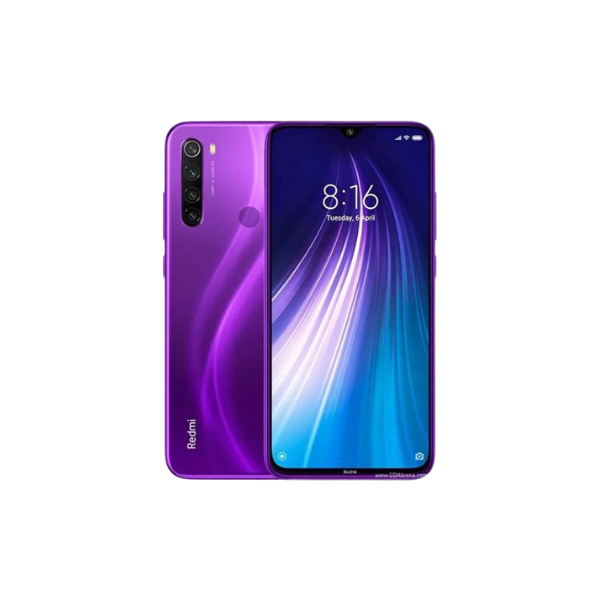
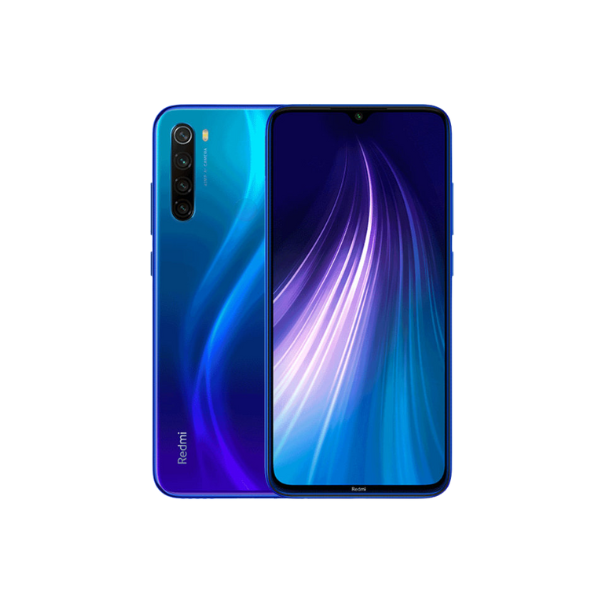
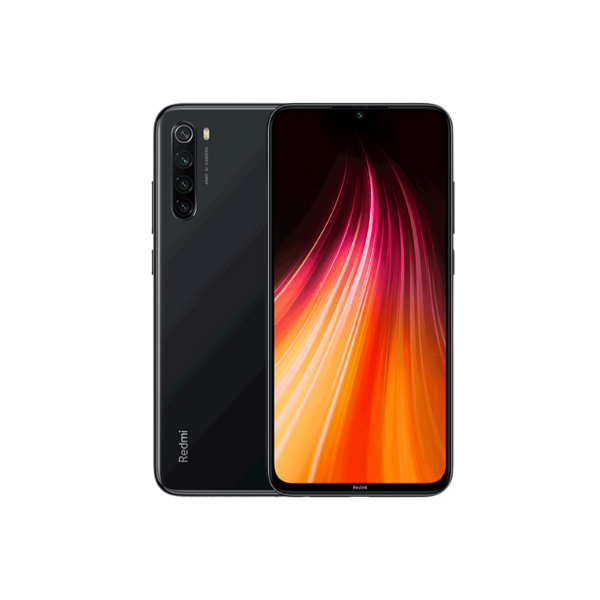
- CPU: Qualcomm SDM665 Snapdragon 665 (11 nm)
- RAM: 3 GB, 4 GB, 6 GB
- Storage: 32 GB, 64 GB, 128 GB
- Display: IPS LCD
- Camera: 48 MP Quad Camera
- OS: Android 9.0 (Pie), MIUI 12.5
- AnTuTu Total Score: 170.516 (v8)
Redmi Note 8 Harga Malaysia Spesifikasi Malaysia
General
| Device Type | Smart Phone |
| Model | M1908C3JH, M1908C3JG, M1908C3JI |
| Announced | 29 August, 2019 |
| Released | 16 October, 2019 |
| Status | Available |
| Price | RM499 - RM688 |
Design
| Type <strong>Design Type</strong> called form factor refers to a mobile phone's size, shape, and style as well as the layout and position of major components of phone. There are three major form factors seen in mobile phones => bar phones, folding phones and sliding phones. | Bar |
| Dimensions | 158.3 x 75.3 x 8.4 mm (6.23 x 2.96 x 0.33 in) |
| Weight | 190 (6.70 oz) |
| Body Type | Glass front (Gorilla Glass 5), glass back (Gorilla Glass 5), plastic frame |
| Colors | Neptune Blue, Moonlight White, Space Black, Nebula Purple, Cosmic Purple |
Network
| 4G Network |
1, 2, 3, 4, 5, 7, 8, 20, 38, 40 1, 3, 5, 8, 38, 40, 41 |
| SIM <strong>SIM</strong> (Subscriber Identity Module) is a small card that contains mobile network subscriber's account information. This allows the phone using the card to attach to a mobile network. The SIM card is most commonly associated with GSM and UMTS mobile networks. Moving a SIM card from one phone to another allows a subscriber to switch mobile phones without having to contact their mobile network carrier. SIM cards can also be used by a phone to store limited amounts of data, such as phone numbers and text messages. | Nano SIM |
| Dual SIM | dual stand-by |
Display
| Display Type <strong>Display Technology => </strong> A number of display technologies and types used in mobile phones => TFT (Thin Film Transistor), IPS (In-Place Switching), OLED (Organic Light Emitting Diode), AMOLED (Active-Matrix Organic Light-Emitting Diode), Super AMOLED (an even advanced version of AMOLED), Resistive Touchscreen (Resistive touchscreens contain two layer of conductive material with a very small gap between them which acts as a resistance), Capacitive Touchsceen (Capacitive touchscreen technology consists of a layer of glass coated with a transparent conductor) | IPS LCD |
| Size | 6.3 inches, 97.4 cm2 (~81.7% screen-to-body ratio) |
| Resolution | 1080 x 2340 pixels, 19.5:9 ratio |
| Display Colors <strong>Display Colors</strong> is refers to the number of different shades of colors that the screen is capable of displaying => 64K colors, 256K colors and 16 million colors, Obviously 16M is highest available range of colors and better than others. | 16 Millions Colors |
| Pixel Density <strong>Pixel Density (PPI)</strong> is refers to the concentration of pixels on a particular display, measured in pixels per inch (ppi). Pixel density is calculated by dividing the diagonal pixel resolution of a display by its diagonal size, higher pixel density better display quality. | (~409 ppi density) |
| Touch Screen | Yes, Multitouch |
| Display Protection <strong>Display Protection => </strong> Gorilla Glass is a special alkali-aluminosilicate glass shield with exceptional damage resistance that helps protect mobile displays from scratches, drops, and bumps of everyday use, It is always better to go for a smartphone with Gorilla Glass for that added protection and peace of mind. | Corning Gorilla Glass 5 |
Camera
| Rear Camera <strong>Camera</strong> is able to capture photographs and usually videos, The most important characteristics of a camera are the resolution (measured in megapixels), lens focus type (fixed or automatic), higher megapixel cameras are known to capture higher quality photos, but not always a good measurement of the photos quality. |
Quad Camera 48 MP, f/1.8, 26mm (wide), 1/2.0&quot;, 0.8µm, PDAF 8 MP, f/2.2, 120˚ (ultrawide), 1/4.0&quot;, 1.12µm 2 MP, f/2.4, (macro) 2 MP, f/2.4, (depth) |
| Front Camera | 13 MP, f/2.0, (wide), 1/3.1&quot;, 1.12µm, 1080p@30fps |
| Video | 4K@30fps, 1080p@30/60/120fps; gyro-EIS |
| Camera Features | LED flash, HDR, panorama |
Software
| Operating System <strong>OS => </strong> Every computer system run on a base software called Operating System (OS). Operating System controls all basic operations of the computer (such as smartphone, PDAs, tablet computers and other handheld devices). The Operating System allows the user to install and run third party applications (apps), apps are used to add new functionality to the device. | Android 9.0 (Pie), upgradable to Android 11 |
| User Interface <strong>UI</strong> or user interface of a device is the look and feel of the on-screen menu system. How it works, its color scheme, how it responds to button presses, all of these things are part of the user interface. | MIUI 12.5 |
Hardware
| Chipset <strong>Chipset</strong> is a group of integrated circuits designed to perform one or a more dedicated functions, often with real time computing constraints, Popular smartphones are equipped with more advanced embedded chipsets that can do many different tasks depending on their programming. | Qualcomm SDM665 Snapdragon 665 (11 nm) |
| CPU <strong>CPU</strong> (Central Processing Unit) mostly known as processors, CPU processes instructions in order to carry out certain functions that make your device operate properly. Processors are often described as the brain of computers, smartphones and tablets, Smartphones and tablets rely on processors to carry out their every task, Processors are an incredibly important factor in selecting any type of computing device, including your smartphone. | Octa-core (4x2.0 GHz Kryo 260 Gold & 4x1.8 GHz Kryo 260 Silver) |
| GPU <strong>GPU</strong> (Graphics Processing Unit) is a single-chip processor designed to rapidly manipulate and alter memory to accelerate the creation of images in a frame buffer intended for output to a display, This includes things such as lighting effects, object transformations, and 3D motion. | Adreno 610 |
| RAM (Memory) <strong>RAM</strong> (Random Access Memory) is a type of computer memory that can be accessed randomly, any byte of memory can be accessed without touching the preceding bytes that allows information to be stored and accessed quickly from random locations. RAM is the most common type of memory found in computer systems, smartphones, tablets and other electronic devices. | 3 GB, 4 GB, 6 GB |
| Internal Storage <strong>Internal Storage</strong> is a data storage space (flash memory) mostly used in smartphones, tablets and other electronic devices where operating system, apps, music, photos, videos, files and other user data Is stored. | 32 GB, 64 GB. 128 GB |
| Card Slot <strong>Memory Card Slot</strong> is a special slot for inserting a memory card. Memory cards allow you to expand the phone's built-in memory, A memory card (sometimes called a flash memory card or a storage card) is a small storage medium used to store data such as text, pictures, audio, and video, for use on small, portable or remote computing devices such as mobile phones, mp3 players, digital cameras. | microSDXC (dedicated slot) |
| Sensors <strong>Sensors</strong> are electronic components that detects and responds to some type of input from the physical environment. The specific input could be light, heat, motion, moisture, pressure and location, The output is generally a signal that is converted to use in computing systems, a location sensor, such as a GPS receiver is able to detect current location of your electronic device. | Fingerprint (rear-mounted), accelerometer, gyro, proximity, compass |
Battery
| Battery Type <strong>Battery Type => </strong> Cell phones run on various kinds of batteries depending on the manufacturer, phone size or shape and features. There are basically four types of cell phone batteries => Lithium Polymer, Lithium Ion, Nickel Metal Hydride and Nickel Cadmium. | Li-Poly (Lithium Polymer) |
| Placement | non-removable |
| Capacity <strong>Battery Capacity</strong> is a measure (typically in Amp-hr) of the charge stored by the battery, and is determined by the mass of active material contained in the battery. The battery capacity represents the maximum amount of energy that can be extracted from the battery under certain conditions. | 4000 mAh |
| Charging | 18W wired |
Connectivity
| Bluetooth <strong>Bluetooth</strong> is a wireless communications technology for exchanging data between mobile phones, headsets, computers and other network devices over short distances without wires, Bluetooth technology was primarily designed to support simple wireless networking of personal consumer devices. | 4.2, A2DP, LE |
| Wi-fi <strong>Wi-Fi</strong> is a popular wireless networking technology using radio waves to provide high-speed network connections that allows devices to communicate without cords or cables, Wi-Fi is increasingly becoming the preferred mode of internet connectivity all over the world. | Wi-Fi 802.11 a/b/g/n/ac, dual-band, Wi-Fi Direct |
| Wi-fi Hotspot | |
| USB | USB Type-C 2.0, USB On-The-Go |
| GPS <strong>GPS</strong> The Global Positioning System is a satellite-based radio navigation system, GPS permits users to determine their position, velocity and the time 24 hours a day, in all weather, anywhere in the world, In order to locate your position, your device or GPS receiver must have a clear view of the sky. | GPS, GLONASS, BDS |
| NFC <strong>NFC</strong> (Near field communication) is a set of standards for smartphones and similar devices to establish peer-to-peer radio communications with each other by touching them together or bringing them into proximity, usually no more than a few inches. | |
| Wireless Charging <strong>Wireless Charging</strong> (Inductive Charging) uses an electromagnetic field to transfer energy between two objects. This is usually done with a charging station. Energy is sent through an inductive coupling to an electrical device, which can then use that energy to charge batteries or run the device. | No |
Media
| Loudspeaker | Yes |
| Handsfree | 3.5mm jack |
Xiaomi telah melancarkan Redmi Note 8 pada tahun 2019. Seperti kebanyakan telefon bimbit hari ini, ciri kamera merupakan aspek utama unggul bagi Xiaomi Redmi Note 8 selain prestasi yang mampu.
Kita boleh katakan bahawa Redmi Note 8 mempunyai reka bentuk yang hampir sama dengan Redmi Note 7S, hanya saja dari segi jumlah kamera, Redmi Note 8 kini dilengkapi dengan 4 kamera di bahagian belakang yang mempunyai fungsi yang berbeza.
Pada masa kini, Redmi Note 8 tidak lagi banyak diedarkan, dan beberapa peniaga juga tidak lagi menyediakannya.
Untuk maklumat lebih lanjut tentang spesifikasi Redmi Note 8, lihat ulasan Redmi Note 8 di bawah ini.
Reka Bentuk
Reka bentuk spesifikasi Redmi Note 8 lebih hampir kepada Redmi Note 7 daripada Redmi Note 8 Pro. Sekiranya telefon bimbit lain mempunyai reka bentuk mewah, Redmi Note 8 mempunyai reka bentuk kelas pertengahan.
Walau bagaimanapun, dari butang kawalan volume, butang daya, laci SIM, hingga ke port USB-C di bahagian bawah, semuanya berkualiti tinggi yang sukar untuk ditolak.
Selain itu, Redmi Note juga dilengkapi dengan pemancar IR sebagai ganti untuk mengawal barang elektronik, seperti penyejuk udara atau televisyen.
Dua warna disediakan, hitam yang kelihatan klasik dan biru yang kontemporari dengan warna bergradasi. Redmi Note 8 beratnya 190g dan ukurannya 158.3 x 75.3 x 8.4mm.
Skrin dilindungi oleh Gorilla Glass 5. Kaca anti-calarkan ini juga meliputi bahagian belakang dan kamera belakang telefon.
Pengimbas cap jari diletakkan di bahagian belakang peranti ini. Kami mendapatkan ciri Pengenalan Wajah atau Buka Wajah pada peranti ini yang membuatnya benar-benar disenangi.
Paparan
Sebenarnya, Redmi Note 8 tidaklah begitu teruk dari segi reka bentuk.
Redmi Note 8 mempunyai paparan LCD IPS 6.3 inci dengan resolusi yang baik, 1080 x 2340 piksel. Ia mempunyai nisbah 19.5:9. Ini adalah panel LCD yang mempunyai resolusi Full HD+.
Bagi bahagian belakang, Xiaomi telah melapiskannya dengan Gorilla Glass 5 seperti skrin di bahagian hadapannya. Walaupun ia sudah menggunakan Gorilla Glass 5, Xiaomi juga telah menyediakan lapisan anti-calarkan tambahan untuk menjadikannya lebih selamat daripada calar.
Kamera
Redmi Note 8 rasmi dilengkapi dengan kamera utama resolusi tinggi yang sama (48MP) seperti Redmi Note 7S, tetapi dengan tiga ciri tambahan, termasuk pengesan kedalaman 2MP, kamera ekstra 8MP dengan lensa ultra-lebar, dan 2MP dengan lensa makro.
Manakala kamera hadapan, Redmi Note 8 mempunyai resolusi 13MP. Tangkapan imej agak baik dengan foto selfie yang kelihatan semulajadi.
Walaupun kamera hadapan tidak dilengkapi dengan kilat LED, anda masih boleh menggunakan ciri kilat skrin untuk menambah cahaya semasa mengambil gambar.
Perisian
Pada awal penampilannya, Redmi Note 8 menggunakan MIUI 10.3.3. Kemudian pada Mei 2020, Xiaomi mengemaskini perisian menggunakan MIUI 11.0.5.0 dengan keselamatan terkini. Malangnya, telefon ini masih tidak menggunakan Android 10.
Kemudian kemas kini sekali lagi dilakukan pada akhir Mac 2024 dengan pelancaran MiUI 12 Redmi Note 8.
Prestasi
Pada mulanya, Redmi Note 8 menggunakan cip Snapdragon 665 dan CPU octa-core 4x 2.0 GHz Kryo 260 Gold + 4x 1.8 GHz Kryo 260. Operasi ini juga disokong oleh sistem operasi Android 9.0 Pie dan GPU Adreno 610.
Oleh kerana prestasi telefon cepat panas, Xiaomi telah mengeluarkan semula Redmi Note 8 dengan cip MediaTek Helio G85 dengan fabrikasi 12nm pada tahun 2024.
Redmi Note 8 menawarkan 4/6GB RAM dan 64/128GB memori dalaman. Untuk versi ini, ia agak kurang baik apabila digunakan untuk bermain permainan, walaupun ia cukup baik dalam penggunaan aplikasi ringan harian.
Untuk audio, anda boleh mendapatkan kualiti bunyi yang bergema pada telefon ini berkat speaker super linear 1217. Sesuai untuk mereka yang suka mendengar muzik atau ingin mendapatkan pengalaman menonton filem yang lebih menyeronokkan.
Bateri dan Pengecasan
Jika bateri telefon biasanya bermula dengan menggunakan 5,000 mAh, bateri Redmi Note 8 menggunakan 4,000 mAh. Ini tentu menjadikannya bukan yang terbaik dari segi bateri. Untuk pengecasan, Redmi Note 8 menyokong pengecasan pantas 18W.
Harga
Redmi Note 8 di Malaysia berbeza berdasarkan RAM yang tersedia, seperti:
- 3/32 GB: harga bermula dari RM499.00 atau setara dengan 111.38$.
- 4/64 GB: harga bermula dari RM449.00 atau setara dengan 111.38$.
- 4/128 GB: harga bermula dari RM624.00 atau setara dengan 139.29$.
- 6/64 GB: harga bermula dari RM688.00 atau setara dengan 153.57$.
- 4/128 GB: harga bermula dari RM596.00 atau setara dengan 133.04$.
Anda boleh menyemak produk ini di laman web rasmi Mi Malaysia
Soalan Lazim
Adakah Redmi Note 8 menyokong pengecasan tanpa wayar?
Tidak. Ciri ini belum tersedia pada Redmi Note 8.
Berapa lama bateri Redmi Note 8 boleh tahan?
Boleh tahan sehingga 14-15 jam dengan penggunaan yang sangat berat, penggunaan normal saya boleh tahan sehingga lebih dari 24 jam, bateri ini mudah bertahan sepanjang hari penggunaan.
Adakah Redmi Note 8 tahan air?
Tidak, kerana Redmi Note 8 tidak mempunyai IP68. Tetapi, tidak perlu risau, ia dilengkapi dengan lapisan penolak air yang tahan dari percikan air.

